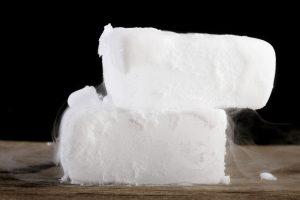
Keeping Ice Cream Frozen with Dry Ice: Everything You Need to Know
Who doesn’t enjoy ice cream? But have you ever had to throw out a tub of melted ice cream because you couldn’t keep it frozen?

Who doesn’t enjoy ice cream? But have you ever had to throw out a tub of melted ice cream because you couldn’t keep it frozen?

Dry ice, a mysterious solid form of carbon dioxide, is used in numerous industries, from perishable goods transportation to medical and scientific realms. The proper

Beat the heat on your boat! Pro tips for freezing ice quickly, keeping your cooler frosty, and enjoying ice-cold drinks all day.

Dry ice has a wide range of applications. You can use it to cool and preserve food while on the move, like on road or

If you have leftover dry ice, it is important to dispose of it appropriately. Dry ice is frozen carbon dioxide. When exposed to air, it